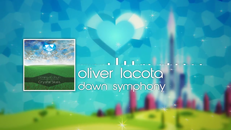
Oliver Lacota - Dawn Symphony [Crystal Skies]
-
-
- 00:00 / 10:07
Related

MIX -
Oliver Lacota - Dawn Symphony [Crystal Skies]
Project Vinyl
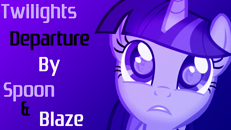
02:37
Twilights Departure By Spoon and Blaze
D3LTA
artist:blaze
1.98 K
views
-
almost 8 years ago
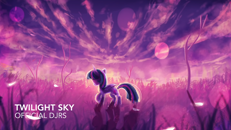
04:52
Official DJRedSkY - Twilight Sky
Winter Rose
artist:djredsky
1.8 K
views
-
over 7 years ago
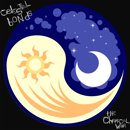
04:15
The Chemical War - Celestial Bonds - 04 Banished to the Moon (Celestial Bonds Broken III)
Winter Rose
3.63 K
views
-
almost 8 years ago

05:45
[Krazy Kremland x MLP] Vinyl Scratch's Disco Train
Winter Rose
artist:delta brony
1.49 K
views
-
over 7 years ago
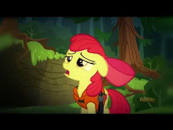
02:41
a
Squeaky_Belle
artist:tre
1.72 K
views
-
about 7 years ago

06:27
JOSHH - Orbital Friendship Cannon
Winter Rose
artist:joshh
695
views
-
over 7 years ago
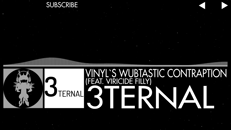
04:20
3ternal-Vinyl`s Wubstastic Contraption VIP-f_8b4yYixBs-MonsterBronyMedia
Winter Rose
369
views
-
almost 8 years ago
Uploader

MIX -
Oliver Lacota - Dawn Symphony [Crystal Skies]
Project Vinyl
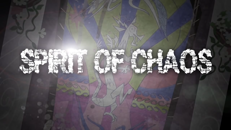
03:41
Aviators - Spirit Of Chaos
Winter Rose
artist:aviators
676
views
-
over 7 years ago
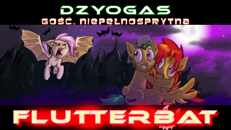
04:39
TieL - Flutterbat (prod. Peet) gość. Niepełnosprytna
Winter Rose
artist:dzyogas
392
views
-
over 7 years ago

04:31
4EverfreeBrony - Still On The Moon (ft. Giggly Maria)-xvkwPM6qyaU-4everfreebrony
Winter Rose
446
views
-
almost 8 years ago

03:25
Hatsune Miku - World is Mine (Dj Dijkstra Remix)-N9SjvqkHJsQ-Dj Ploxy
Winter Rose
355
views
-
almost 8 years ago
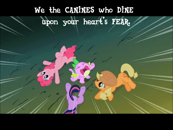
03:21
MC Flowny ~ Dog Diamonds (Over Animus Vox)
Winter Rose
artist:mc flowny
615
views
-
over 7 years ago
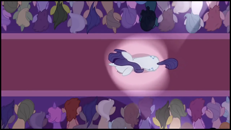
03:06
Reception (Art of the Dress Remix)
Winter Rose
artist:tripleblueshell
1.16 K
views
-
over 7 years ago

04:30
Can't Wait (Feat. FritzyBeat) - Panic
Winter Rose
artist:fritzybeat,artist:panic
2.25 K
views
-
over 7 years ago
Oliver Lacota - Dawn Symphony [Crystal Skies]
Winter Rose
14 October 2016
•
928
views
0
Comments
Ponies At Dawn: poniesatdawn.bandcamp....
Steffy O.'s visualisations: www.youtube.com/user/S...
MotD #364: www.equestriadaily.com...
Largo: 0:00 (Sunrise)
Allegro: 2:39 (Storm)
Moderato: 4:53 (Mist)
Andante: 7:13 (Dawn)
Scoring:
16 1st violins
16 2nd violins
12 violas
10 cellos
8 basses
2 flutes
1 oboe
1 clarinet
1 bassoon
1 trumpet
3 trombones
4 horns
1 tuba
1 harp
1 timpani
1 triangle
1 solo cello (conductor)
Hey guys! I'm not dead! I've just been super-quiet and super-busy recently XD So obviously, the best way to make a comeback is release a ten minute-long symphony, amirite?
So, the backstory for this one: I was approached to make a song for the Ponies At Dawn - Crystal Skies album quite some time ago. I bandied around with a few random ideas before putting it out of mind for the time being. Towards the last month or so, the album organiser reminded me the due date was fast approaching. At this point in time, I had recently acquired CineWinds and CineBrass and, in an effort to get a feel for the instruments, I was listening to Antonin Dvořák's "New World Symphony" (specifically, the largo). The result was... this. Once the track was complete I shipped it off to have a visualisation made by Steffy O. And speaking of visualisations, if you'll indulge me, this symphony has a little story of sorts to accompany it. If you would like to read on...
Largo (0:00)
The first movement of the piece starts off like the largo from the New World Symphony - a slow orchestral part with a soloist carrying the melody (I picked a clarinet, though in the New World Symphony it's a cor anglais; in the second half, the violas take over). This movement symbolises Celestia raising the sun on the horizon of Equestria.
Allegro (2:39)
The second movement was also inspired by the largo from the "New World Symphony", specifically the later part between the clarinet and the flutes (though in mine, I substituted the clarinet for a bassoon). This part of the symphony is the clouds obscuring Celestia's sunrise and a light pattering of rain (the opening of the movement with the bassoon) before the storm hits outright (the full orchestra, with the timpani representing the thunder).
Moderato (4:53)
The third movement is the storm abating, leaving a fine mist with the sun wearily poking through the clouds. This is where the oboe finally gets an opportunity to play, as does the harp. The moderato is set to contrast with the allegro, signifying the calm *after* the storm.
Andante (7:13)
Lastly, the fourth and final movement is a recapitulation of the original theme, with some changes (again, an idea I took from the "New World Symphony", right down to the end of the movement). In this movement, the conductor - who is meant to be a cellist - is to cease conducting the orchestra and lead the melody themselves (much as the clarinet and violas did in the first movement). And yes, in my mind's eye, it was Octavia. This movement is the mist finally dissipating, allowing the sun to shine through once more, concluding with the dawn finally rising, and Celestia's work complete.
It's funny, I actually started this and got about a third of the way into the allegro before putting it on hold - it was when I was reminded that I only had a week remaining to complete the song that I really started cramming it. My routine basically consisted of waking up, breakfast, a few hours into the symphony, lunch, a few more hours, then going to work. For a solid week. Was actually quite cathartic in a way.
Anyway, I've rambled long enough. Hope you all enjoy!
Steffy O.'s visualisations: www.youtube.com/user/S...
MotD #364: www.equestriadaily.com...
Largo: 0:00 (Sunrise)
Allegro: 2:39 (Storm)
Moderato: 4:53 (Mist)
Andante: 7:13 (Dawn)
Scoring:
16 1st violins
16 2nd violins
12 violas
10 cellos
8 basses
2 flutes
1 oboe
1 clarinet
1 bassoon
1 trumpet
3 trombones
4 horns
1 tuba
1 harp
1 timpani
1 triangle
1 solo cello (conductor)
Hey guys! I'm not dead! I've just been super-quiet and super-busy recently XD So obviously, the best way to make a comeback is release a ten minute-long symphony, amirite?
So, the backstory for this one: I was approached to make a song for the Ponies At Dawn - Crystal Skies album quite some time ago. I bandied around with a few random ideas before putting it out of mind for the time being. Towards the last month or so, the album organiser reminded me the due date was fast approaching. At this point in time, I had recently acquired CineWinds and CineBrass and, in an effort to get a feel for the instruments, I was listening to Antonin Dvořák's "New World Symphony" (specifically, the largo). The result was... this. Once the track was complete I shipped it off to have a visualisation made by Steffy O. And speaking of visualisations, if you'll indulge me, this symphony has a little story of sorts to accompany it. If you would like to read on...
Largo (0:00)
The first movement of the piece starts off like the largo from the New World Symphony - a slow orchestral part with a soloist carrying the melody (I picked a clarinet, though in the New World Symphony it's a cor anglais; in the second half, the violas take over). This movement symbolises Celestia raising the sun on the horizon of Equestria.
Allegro (2:39)
The second movement was also inspired by the largo from the "New World Symphony", specifically the later part between the clarinet and the flutes (though in mine, I substituted the clarinet for a bassoon). This part of the symphony is the clouds obscuring Celestia's sunrise and a light pattering of rain (the opening of the movement with the bassoon) before the storm hits outright (the full orchestra, with the timpani representing the thunder).
Moderato (4:53)
The third movement is the storm abating, leaving a fine mist with the sun wearily poking through the clouds. This is where the oboe finally gets an opportunity to play, as does the harp. The moderato is set to contrast with the allegro, signifying the calm *after* the storm.
Andante (7:13)
Lastly, the fourth and final movement is a recapitulation of the original theme, with some changes (again, an idea I took from the "New World Symphony", right down to the end of the movement). In this movement, the conductor - who is meant to be a cellist - is to cease conducting the orchestra and lead the melody themselves (much as the clarinet and violas did in the first movement). And yes, in my mind's eye, it was Octavia. This movement is the mist finally dissipating, allowing the sun to shine through once more, concluding with the dawn finally rising, and Celestia's work complete.
It's funny, I actually started this and got about a third of the way into the allegro before putting it on hold - it was when I was reminded that I only had a week remaining to complete the song that I really started cramming it. My routine basically consisted of waking up, breakfast, a few hours into the symphony, lunch, a few more hours, then going to work. For a solid week. Was actually quite cathartic in a way.
Anyway, I've rambled long enough. Hope you all enjoy!
|
Embed
|
|
Projectvinyl preview
|
|
BBCode
|
Field
Attribute
File Size
128.71 MB
File Type
.mp4
Mime Type
video/mp4
Duration
10:07
Dimensions
1280x720
